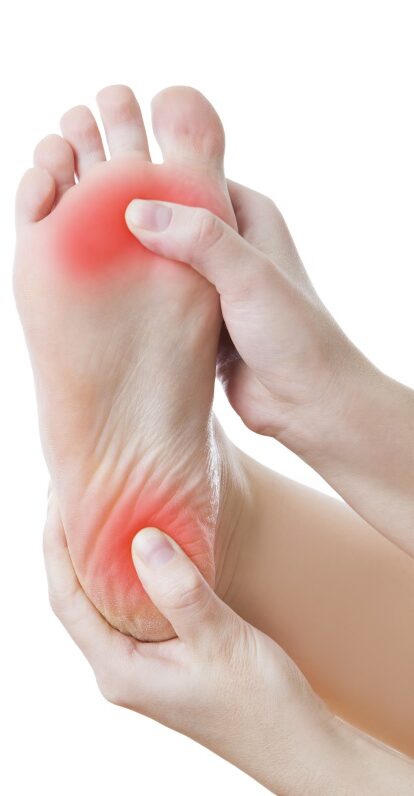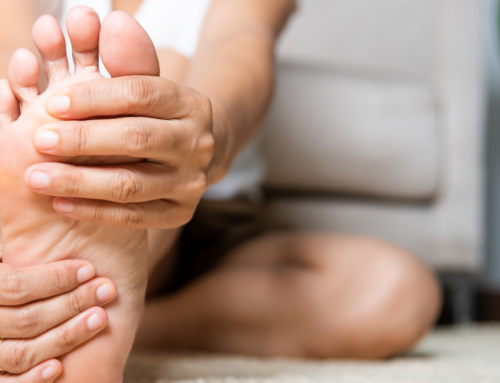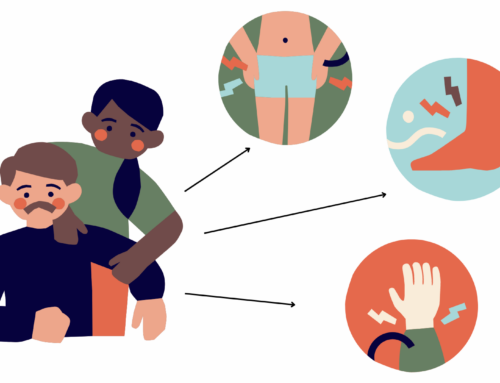Plantar fasciitis: a consequence of flat feet
When a person has flat feet it usually causes the heel bone to have a deviation due to the fall of the arch. This can cause pain, which is reflected in plantar fasciitis. In the long term it can cause problems in the ankle or even knee joint. Because of this is that the cross on the right foot in the image looks twisted with respect to the left foot.
It involves inflammation of a thick band of tissue that runs across the sole of the foot and connects the heel bone to the toes. It commonly causes shooting pain that usually appears with the first steps in the morning. As the person gets up and moves around, the pain usually subsides, but may return after long periods of standing or when standing after sitting.
Causes
The plantar fascia is shaped like an arch, which supports the foot and absorbs shock when walking. If the tension and stress applied to this arch becomes too great, small tears in the fascia can occur. Repetitive stretching and tearing can irritate or inflame the fascia, although the cause remains unclear in many cases of plantar fasciitis.
Factors that increase plantar fasciitis

When a person has flat feet it usually causes the heel bone to have a deviation due to the fall of the arch. This can cause pain, which is reflected in plantar fasciitis. In the long term it can cause problems in the ankle or even knee joint. Because of this is that the cross on the right foot in the image looks twisted with respect to the left foot.
It involves inflammation of a thick band of tissue that runs across the sole of the foot and connects the heel bone to the toes. It commonly causes shooting pain that usually appears with the first steps in the morning. As the person gets up and moves around, the pain usually subsides, but may return after long periods of standing or when standing after sitting.
Causes
The plantar fascia is shaped like an arch, which supports the foot and absorbs shock when walking. If the tension and stress applied to this arch becomes too great, small tears in the fascia can occur. Repetitive stretching and tearing can irritate or inflame the fascia, although the cause remains unclear in many cases of plantar fasciitis.
Factors that increase plantar fasciitis






